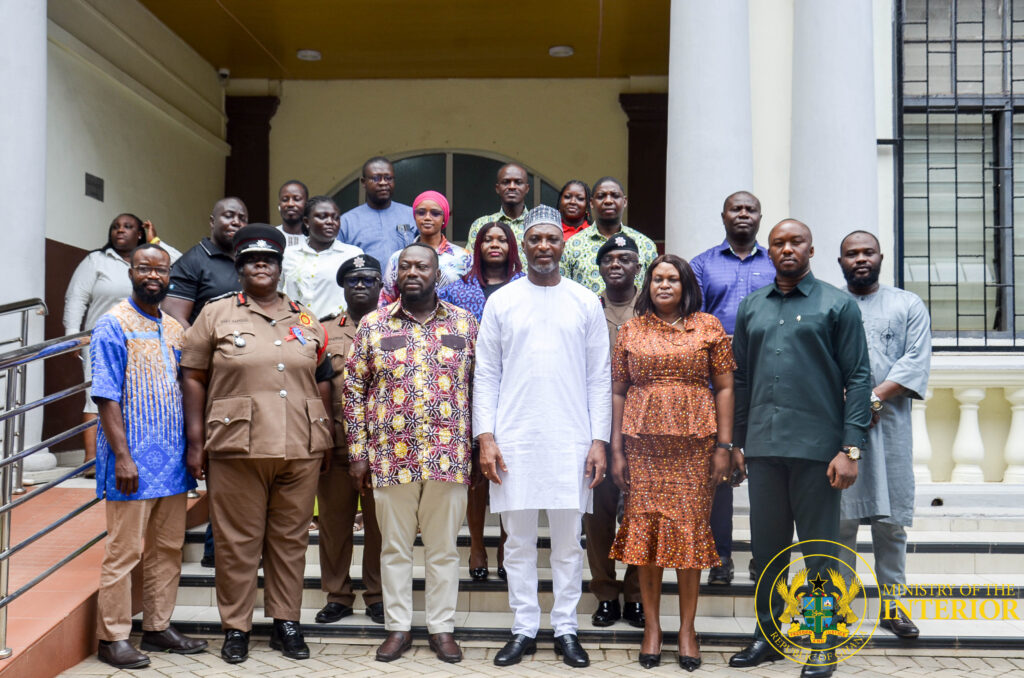The Ghana National Fire Service (GNFS) and the Youth Employment Agency (YEA) have entered into a landmark partnership aimed at bolstering emergency response capabilities while tackling youth unemployment in Ghana.
Through the signing of a Memorandum of Understanding (MoU), both institutions will collaborate to recruit 5,000 Fire Service Assistants under a new module that falls in line with President John Dramani Mahama’s 24-hour economy agenda.
“This partnership will not only create jobs for the youth but will also improve our emergency response framework”
Hon. Muntaka Mohammed-Mubarak, Minister for the Interior
The agreement, formalized in Accra, signals a dual commitment to national development and social intervention, with fire safety and youth empowerment positioned at the heart of the initiative. At the signing event, key government officials praised the project’s relevance in addressing critical national needs.
Speaking at the ceremony, Minister for the Interior, Hon. Muntaka Mohammed-Mubarak, said the initiative reflects the government’s resolve to merge public safety with job creation under the broader vision of national development.

He linked the recruitment drive to the Government’s 24-hour economy initiative, which aims to increase productivity, expand access to services, and drive employment by encouraging round-the-clock economic activity across sectors.
Minister for Youth Development and Empowerment, Hon. George Opare Addo, commended the Ministry of the Interior and the GNFS for implementing a forward-thinking module with practical value for young Ghanaians.
“I want to thank the Interior Minister for launching this module and appeal to him to consider replicating similar initiatives across other agencies under his jurisdiction”
Hon. George Opare Addo, Minister for Youth Development and Empowerment
According to the Minister, this model of inter-agency cooperation not only promotes the national interest but serves as a direct response to the government’s broader youth empowerment strategy under President Mahama’s administration.
Operational Strength

Ag. Chief Fire Officer, Daniella Mawusi Ntow Sarpong, said the collaboration with YEA will substantially boost the capacity of the Ghana National Fire Service in communities and enhance their “fire prevention and response capabilities.”
She acknowledged the growing demands on the Service, especially with recent incidents involving markets, industrial hubs, and densely populated neighborhoods. The addition of 5,000 new Fire Service Assistants is expected to ease personnel constraints and enable the Service to broaden its community outreach and safety enforcement operations.
YEA Chief Executive Officer, Mr. Malik Basintale, also highlighted the importance of institutional collaboration in fulfilling national mandates.
“It is only through collaboration like this that we can meet the pressing needs of both public institutions and the youth,” Mr. Basintale remarked.
He described the agreement as one of the most significant moves by the Agency this year, noting that it aligns directly with the strategic goals outlined in the Agency’s employment generation plan.
Enhancing Safety and Inclusion
The MoU between the GNFS and YEA comes at a time when fire incidents have been on the rise nationwide, sparking concerns about response times, logistical readiness, and community fire prevention education.

Officials say the deployment of Fire Service Assistants will not only support firefighting operations but also deepen community engagement through awareness creation and preventive campaigns.
The government has emphasized the need for all interventions to contribute tangibly to both safety and socio-economic transformation. This latest effort blends both, showcasing a model that combines public sector efficiency with employment generation.
“We are not just filling vacancies. We are creating a pipeline of skilled young people equipped to serve the nation and support the Fire Service in its vital mission”
Daniella Mawusi Ntow Sarpong, Ag. Chief Fire Officer
The GNFS and YEA have affirmed their readiness to begin the implementation process and ensure that recruitment, training, and deployment are carried out efficiently and transparently.
Both institutions have indicated that the collaboration may serve as a model for future partnerships between public safety institutions and employment-focused agencies.




















